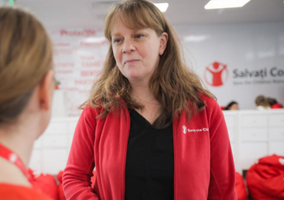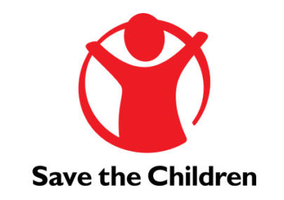Save the Children UK has raised nearly £100m in emergency appeal funds through its own fundraising and the Disasters Emergency Committee (DEC) in the last two years, according to its recently filed annual report.
Last year, the charity recognised £40m of income from its supporters and through its partnership with DEC for its emergency response work, a decrease on the £57m raised in 2022.
At £296m, its total income remained “broadly flat” compared with 2022 (£294m) while total expenditure increased by £9m to £295m.
Meanwhile, the charity received 44 complaints in the last quarter of 2023 following its messaging around the escalating Israeli-Palestinian conflict.
Overall, it received fewer public complaints, which fell from 465 to 348.
‘Extraordinary levels of emergency appeal income’
Save the Children UK said in its accounts that the last two years have seen “extraordinarily high levels of emergency appeal income”.
Total emergency appeal income in 2023 was £40m, compared with £57m in 2022.
The charity raised £4.5m through its emergency fund, £2.4m through its Türkiye-Syria earthquake appeal and £2.4m through its Gaza appeal.
The rest came from DEC appeals for the Afghanistan crisis, Ukraine conflict, Türkiye and Syria earthquake and Pakistan floods.
DEC’s Türkiye–Syria appeal alone generated over £150m, of which around 18% is allocated to Save the Children to be spent in 2023 and over the coming years.
Total income remained flat
The charity’s total income rose by £2m to £296m, with income from institutional donors such as the Foreign, Commonwealth and Development Office growing by £11m to £176m.
However, this was offset by an £11m decrease in money from corporates, major donors and trusts (£34m).
“Income from major donors and trusts was £18m, an £8m decrease on 2022 driven by lower emergency appeal income in 2023,” the report reads.
“Income for the Ukraine appeal and our emergency fund were exceptionally high in 2022.
“Strong relationships with our corporate partners generated £16m in 2023 which is down £3m compared to 2022, which was particularly high due to our corporate partners’ generous response to the Ukraine appeal.”
Save the Children UK spent £295m last year (2022: £286m), mainly on emergencies (£79m), education (£67m) and health (£38m), with tens of millions more on family livelihoods, nutrition and child protection.
It spent £8m on its retail stores, compared with £7m in 2022, due to “one-off benefits in 2022, one-off spend in 2023, inflation and increasing the number of paid shop managers”.
Its shops generated £100,000 profit last year (2022: £1.1m), partly due to the impact of higher overhead allocated costs.
More inclusive, equitable and anti-racist
As of 31 December 2023, Save the Children UK had 907 active employees, which is 63 more than in 2022.
The charity added it has made some progress in becoming an inclusive organisation and tackling institutional racism since it launched its strategy in 2020.
For instance, it has increased ethnic minority representation at senior levels from 21% to 23.6% while women in senior grades now make up 71%.
On wellbeing, the charity said that between December 2021 and December 2023, it saw a 36% reduction in stress-related staff absences.
“While we’ve made significant strides, there’s still room for improvement in further reducing stress levels among our teams,” it said.
Ethnicity and gender pay gaps
Save the Children UK’s median gender pay gap increased to 5.4% compared with 3% in 2022 and a national figure of 14.3%.
The charity said this is due to the composition of its workforce, “particularly the disproportionate representation of males in senior grades compared to junior grades”.
As of 5 April 2023, its workforce was 72% female and 28% male, with women making up nearly 80% of the lowest-paid quartile and 66% of the highest-paid quartile.
Meanwhile, its median ethnicity pay gap fell from 5.3% to 1.6%.
As of April 2023, 71% of the charity’s staff identified as white and 24% as Black, Asian and minority ethnic, with no data available for the remaining 5%.
Related articles











